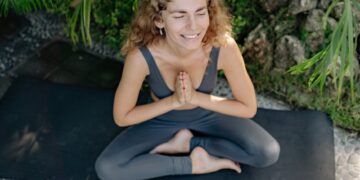5 Pranayama Meditation Techniques for Stress Relief and Better Breathing
In today’s fast-paced world, finding tranquility can often seem like a chore. Fortunately, ancient practices like pranayama meditation offer a gateway to enhanced calmness and improved respiratory health. Pranayama, a component of yoga, involves the regulation of breath through specific techniques that foster physical, mental, and emotional balance. Discovering simple yet effective ways to incorporate these exercises into your daily routine can significantly diminish stress and elevate your breathing capacity.
If you feel overwhelmed by the demands of daily life or simply seek a method to breathe easier, exploring these 5 pranayama meditation techniques can be your first transformative step towards tranquility and vitality.
1. Anulom Vilom (Alternate Nostril Breathing)
How to Practice:
Anulom Vilom, also known as Nadi Shodhana, helps calibrate your breathing and is excellent for stress relief. To practice, sit in a comfortable position with your spine erect. Gently close your right nostril with your thumb and inhale deeply through your left nostril. Then, close the left nostril with your fingers, and exhale slowly through the right nostril. Invert the procedure by inhaling through the right nostril and exhaling through the left.
Benefits:
This technique is particularly beneficial for clearing the mind and balancing the left and right hemispheres of the brain, promoting mental clarity and relaxation.
2. Kapalabhati (Skull Shining Breath)
How to Practice:
Kapalabhati is a bit more dynamic and serves as both a cleansing and invigorating practice. Begin by sitting comfortably with your spine upright. Take a calm breath in, and then quickly and forcefully expel all the air from your lungs using your abdominal muscles. The inhalation should be automatic and passive, focusing on the forceful exhalation.
Benefits:
Kapalabhati increases oxygen supply to the brain, thus energizing the nervous system and rejuvenating brain cells. It is known to enhance focus and alleviate stress-related issues such as anxiety and lethargy.
3. Bhramari (Bee Breathing)
How to Practice:
The Bhramari pranayama involves mimicking the humming sound of a bee, which is known to have a therapeutic effect. Close your eyes and deepen your breath. Place your index fingers on your ears to close them. Inhale deeply, and as you exhale, gently make a loud humming sound.
Benefits:
This technique is incredibly effective at warding off frustration and calming your mind. The vibrations from the humming sound naturally meditate the brain and reduce stress hormones.
4. Dirga (Three-Part Breath)
How to Practice:
Dirga pranayama is ideal for those new to breathing exercises, emphasizing full, conscious breathing. Lie on your back or sit with a straight back. Begin to inhale slowly, first filling your abdomen, then the ribcage, and finally the chest. Reverse the process during exhalation: exhale from the chest, then the ribcage, and finally pull the stomach in to expel the remaining air.
Benefits:
This technique enhances the capacity of your lungs, improves the flexibility of the diaphragm, and helps release tension and anxiety. It encourages a full and conscious breathing pattern that is therapeutic.
5. Ujjayi (Ocean Breath)
How to Practice:
Ujjayi Pranayama is practiced by inhaling deeply through the nose. With your mouth closed, constrict the throat to make a soft “hhhh” sound similar to the waves of an ocean as you exhale through your nose. The inhalations and exhalations are both slow and deep.
Benefits:
The friction of air passing through the throat generates soothing heat and a profound sound that helps in focusing the mind and warming the body. It’s particularly useful before or during meditation to settle the mind and body.
Conclusion: Embracing the Power of Breath
Integrating these 5 pranayama meditation techniques into your daily life can dramatically alleviate stress and improve your breathing capability. Whether you are completely new to this practice or have dabbled in meditation before, pranayama offers accessible tools to aid in managing stress and enhancing overall well-being. Take each technique at your own pace, observe the changes in your mental and physical state, and embrace the journey to a more relaxed and breathable life. Remember, the key to mastery in pranayama lies within patience and continuous practice.


































































